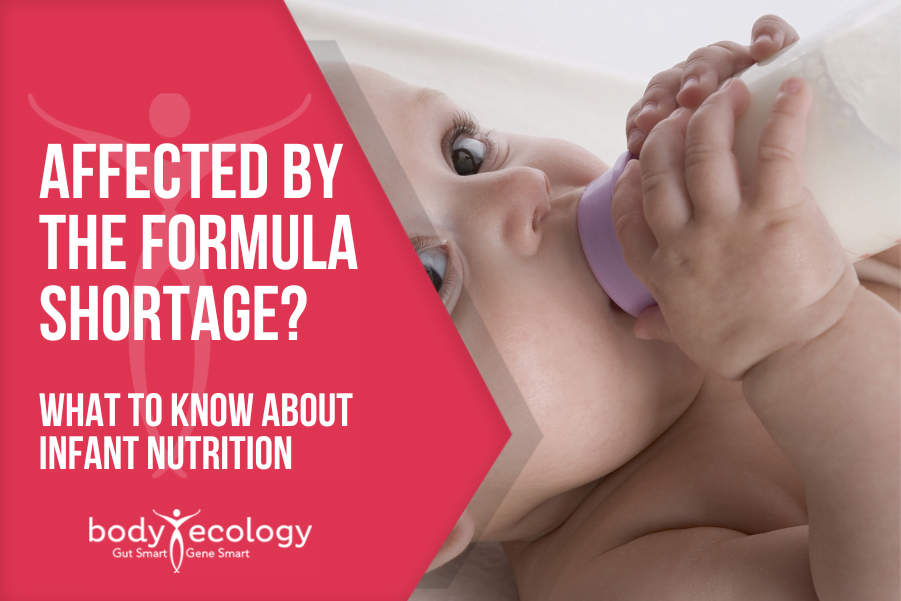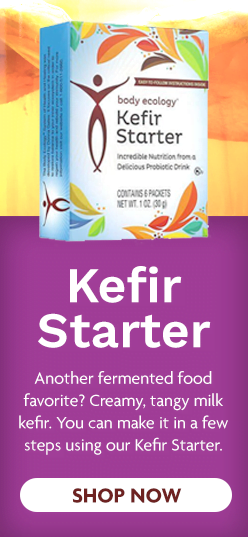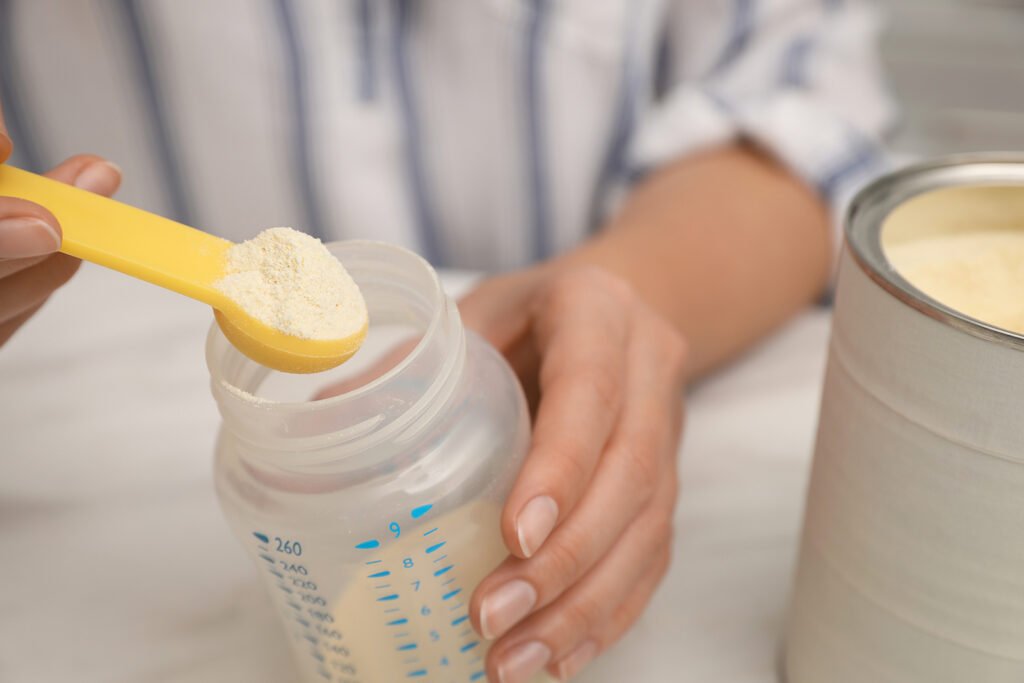What The Baby Formula Shortage Has Taught Us About Infant Nutrition

 In the 1950s and 60s, many new mothers preferred not to breastfeed their infants. At the time, breastfeeding was looked down upon—only practiced by the underprivileged and the poor. Thanks to this cultural belief, most middle and upper-class women preferred to bottle feed their babies. Thus, the need for bottle formulas.
In the 1950s and 60s, many new mothers preferred not to breastfeed their infants. At the time, breastfeeding was looked down upon—only practiced by the underprivileged and the poor. Thanks to this cultural belief, most middle and upper-class women preferred to bottle feed their babies. Thus, the need for bottle formulas.
Today, pediatricians recommend exclusively breastfeeding for at least the first six months, and there are many mothers who prefer breastfeeding since doctors have discovered the many health benefits to both baby and mother.
Still, many women bottle feed because they have no choice but to go back to work, they don’t produce an adequate supply of milk, or they lack the proper support to successfully breastfeed. Whatever the reason, by 6 months of age, only 25% of babies are exclusively breastfed, which means most parents are supplementing with some type of formula.
For mothers who can’t breastfeed, or don’t want to, is formula their only choice? Let’s explore some of the options.
Soy-Based Formulas
For years, soy has been associated with health benefits, such as blood sugar control, improved heart health and management of menopausal symptoms. Research has even shown that soy may possibly even lower the risk of certain types of cancers in adults.
Some reasons parents choose soy formulas include:
- Cultural or religious concerns (i.e. vegan lifestyle)
- Genetically intolerant to lactose in breast milk – a condition called galactosemia
- Low-cost and widely available
The Problem With Soy
Soy is typically a low-cost, low-quality form of protein used by food manufacturers in baby formula, protein drinks, protein bars and other food products. Soy contains genistein, and other phytoestrogens, (which are components of soy) and are therefore, contained in soy-based formulas.
Phytoestrogens are plant-based constituents that mimic estradiol, the primary form of estrogen in females and males. In recent years, science has uncovered potential harm in phytoestrogens, causing concern amongst researchers surrounding repercussions for infants who have been introduced to them through soy-based infant formulas.
Due to inconclusive results in multiple studies conducted in both animals and humans, The American Academy of Pediatrics has recommended that soy-based formulas be recommended, only when medically necessary — such as when the baby has galactosemia or hereditary lactase deficiency. These are medical conditions that prevent babies from digesting the natural sugars in cow’s milk based formulas.

Goat’s Milk
Goat’s milk is an excellent alternative to soy and to human breast milk when necessary. Goat’s milk can even be purchased in powdered form.
One may ask why there is a panic surrounding the shortage of formula at all when goat’s milk is a widely available, nutritionally dense, alternative to formula? The answer is controversial.
Goat’s milk and in particular, raw goat’s milk, is currently recommended by many health practitioners, but other experts recommend against raw milk from any animal, saying it is unsafe.
However, raw goat’s milk has a 10,000 year long history of being used to feed human infants (yes, even directly from the animal.) Raw goat’s milk has a smaller fat molecule that easily crosses the human cell membrane without triggering the formation of mucus, and the fat is closer to the fat in human breast milk.
Though finding reports of illness due to raw goat’s milk consumption is very difficult, many studies still show that the benefits of pasteurization outweighs the “safety risk” of consuming raw goat’s milk—boasting only a negligible loss of vitamins and minerals, enzymes and beneficial bacteria. But is this true? Do your research and you will find it is the commercial dairy industry that often publishes these studies to protect profits.
On the other hand, it’s not hard to find the many studies and reviews that report on the benefits of goat’s milk through the years.
Nevertheless, the sale of raw goat’s milk is illegal in 20 U.S. states and opponents claim it may contain harmful bacteria such as E. coli, Campylobacter, Listeria and Salmonella.
Understanding Pasteurization
Standard pasteurized milk is heated to 161 degrees fahrenheit for 15 seconds. Ultra-pasteurized milk has been heated to 280 degrees fahrenheit for a minimum of 2 seconds – usually longer. Pasteurization causes some nutrient loss in milk, and ultra-pasteurization causes denaturation of the whey protein. Denaturation can affect the protein’s solubility and how it behaves in the body. Why do we have choices when we go to purchase milk? Because of the extreme heat of ultra-pasteurization, the milk can remain unopened for up to six months.
How To Safely Use Goat’s Milk
If raw goat’s milk isn’t advisable or available, an effective way to help establish a healthy microbiome in an infant (who is four months of age or older) is to ferment it. Fermenting undoes some of the “denaturing” caused by pasteurization.
Body Ecology makes a convenient kefir starter that provides you with a delicious drink that is also quick, easy and fun to make. In fact, kids love making it! If they don’t like the sour taste of kefir, you can flavor the milk kefir with vanilla flavoring and a little BE Sweet®.
Fermented milk enhances the number of amino acids, enzymes, calcium, magnesium, phosphorus and B vitamins -and it helps to colonize the GI tract with beneficial microbes that are unique to kefir. Kefir is the only fermented milk product that has beneficial yeast. Yeast makes up an essential part of a healthy microbiome called the “mycobiome.”
In Russia, babies are given milk kefir, diluted with water, as early as four months of age. As a baby grows older, a morning smoothie (with some berries, lettuce, cucumber, kale and perhaps even half of a banana) helps contribute to a robust, developing microbiome. Body Ecology’s Bifidus Power Blend is always good to add since Bifidus bacteria are initially the most important bacteria in a healthy baby’s gut.
When giving milk kefir to babies, it should be diluted with water at first to thin it out to the consistency of breast milk. Always make sure to purchase your kefir starter from a reputable source like Body Ecology. This ensures you are obtaining an authentic kefir culture.
Plant-Based Formula Alternatives
With the rise of vegan lifestyles, dairy sensitivities, and the knowledge that soy isn’t the healthiest alternative, other plant-based formula solutions are now available — although not widely available in the U.S.
Plant-based vegan formulas are typically made from rice, pea and nuts like almonds and cashews. However, we don’t recommend those because they are high in oxalates. Adding MCT oil supplies a beneficial, easily-digestible fat. You can obtain both vitamins and minerals from plant-based sources, such as D2 from lichen and mushrooms, and DHA from sea algae. If you want, adding a little Ripple Pea Protein (available in most health food stores) makes it creamier and even more delicious.
Boost The Ability Of Any Formula ‘Alternative’
For years, we have recommended taking the juice from fermented veggies, diluting it with water, and then putting a few droppers full in the baby’s mouth. Body Ecology’s Culture Starter is an effective way to ferment vegetables yielding a wide diversity of beneficial microbes.
Bifidus infantis is the predominant bacteria in the baby’s gut for the first six weeks, but soon other strains of bifidus grow. Bifdus plays a key role in the baby’s microbiome throughout childhood and adulthood.
Pureed vegetables should be the baby’s first solid food. Add a little bit of butter to the veggies for the baby’s developing brain. Vegetables also become an important prebiotic to nurture the developing microbiome.
Once the baby can handle solid foods, softly cooked egg yolk can be the baby’s first animal protein.
To create a complete meal for optimal intestinal development, add Body Ecology’s Bifidus Power Blend and Ecobloom fiber (to feed the bifidobacteria), to a baby’s bottle.
Just these simple steps give a child an enormous advantage as their young friends expose them to multiple illnesses for which many take round after round of antibiotics, suppressing their immunity when they need it most.
There are alternatives, even recipes for “good” baby formula when breastfeeding isn’t possible. Do your homework to determine which formula alternative is best for your baby and your family.









